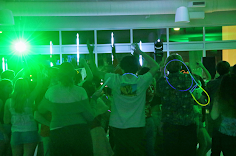You have probably heard your teachers say, “I can tell the difference between AI and human writing.” This made me wonder if they can tell the difference between whether the writing was human writing or AI. A sophomore, Tanya Burgess, helped write the “human” writing and was given the same prompt that I gave to Chat GPT, which was “The History of Cheese.” I asked three students in Honors English 10, and then the teacher for Honors English 10, Dr. Derrick King, to take a closer look at the pieces. The two paragraphs are listed below. If you want to guess which is AI or human, the answer will be listed below after the paragraphs:
Paragraph 1:
Cheese has been around for thousands of years, with its origins likely dating back over 7,000 years in the Middle East. It probably started by accident when early people stored milk in animal stomachs, and the natural enzymes caused it to curdle into cheese. Ancient Egyptians and Sumerians were already making cheese, and it quickly became a staple in early diets.
The Greeks and Romans helped spread cheese across Europe. They experimented with different types and techniques, and Roman soldiers even brought cheese-making skills with them as they expanded their empire. After Rome fell, cheese-making mostly continued in monasteries, where monks created famous cheeses like Brie, Roquefort, and Parmesan.
As time went on, cheese became a common food across Europe. During the Industrial Revolution, factories started mass-producing cheese, making it easier and cheaper to get. Today, cheese is made all over the world in thousands of styles—from simple sandwich slices to gourmet varieties aged for years. Its long journey from ancient farms to modern kitchens shows just how much people have always loved it.
Paragraph 2:
Cheese has evolved through many techniques over time, such as the early animal stomachs, the spread of techniques through Greek and Roman conquest, and mass production during the Industrial Revolution.
Cheese began to take shape in the Middle East, but it quickly became part of the daily lives of people in early civilizations. Around 7000 years ago, farmers were milking their animals when they made an observation. Instead of the milk just remaining milk in the animals’ stomachs, it curdled into a fat-filled form, which is cheese. This illustrated that the early farmers in the Middle East did not intend on making cheese, but nevertheless, it was not toxic, meaning that the cheese could serve as a benefit to the people. For example, when the early civilizations of Sumer and Egypt came to power, records show that despite cheese being relatively new, it was already a huge part of their diet. This illustrated that cheese was very beneficial and provided diversity in their diets, which allowed for better quality of life, which led to the growth and expansion of these civilizations. Overall, what started as an accident led to better qualities of life.
As the Greek and Roman empires rose, more people got exposed to the cheese-making techniques, which led them to preserving them. For example, when people like Alexander the Great and Julius Caesar expanded their empires, the soldiers had conflicting views about their techniques for making the cheese, which spread to the conquered regions. This illustrated that the Greeks and Romans were able to expand the production and presence of cheese well past the old borders of the Middle East. In this way, more people learned about the benefits of cheese, which led to its preservation. For example, many monasteries during the Middle Ages utilized these methods to make and preserve cheese. From this preservation emerged cheeses like Brie and Parmesan, which illustrated the dedication and effort the monks put into preserving the technique. Overall, the imperial conquest made way for more excitement about the techniques of making cheese.
After the Industrial Revolution, cheese became cheaper, ultimately becoming a normal part of the lives of the middle class. During the Industrial Revolution, when factories dedicated to mass production of certain products for trade appeared, certain factories dedicated to the production of cheese appeared. This ultimately increased the global reach of cheese, since it was much easier to trade, and also reduced the prices and difficulty of the cheese production. In this way, more people were able to easily access the cheese. Nowadays, while there are still deluxe cheeses in places like bakeries, most cheeses are commonly seen in foods amongst the population. This further illustrated the ease of cheese production after 1900. Ultimately, cheese became cheaper and more enjoyable over time.
Cheese has been around for thousands of years, with its origins likely dating back over 7,000 years in the Middle East. It probably started by accident when early people stored milk in animal stomachs, and the natural enzymes caused it to curdle into cheese. Ancient Egyptians and Sumerians were already making cheese, and it quickly became a staple in early diets.
The Greeks and Romans helped spread cheese across Europe. They experimented with different types and techniques, and Roman soldiers even brought cheese-making skills with them as they expanded their empire. After Rome fell, cheese-making mostly continued in monasteries, where monks created famous cheeses like Brie, Roquefort, and Parmesan.
As time went on, cheese became a common food across Europe. During the Industrial Revolution, factories started mass-producing cheese, making it easier and cheaper to get. Today, cheese is made all over the world in thousands of styles—from simple sandwich slices to gourmet varieties aged for years. Its long journey from ancient farms to modern kitchens shows just how much people have always loved it.
The paragraph that was AI was… Paragraph number one! AI typically follows specific patterns in all of the things that it writes, which to some people often is a giveaway to what AI is or is not. Some of the patterns to look for are repetitive points, robotic and does not have the emotional subtlety that humans do, and being very neutral, as not just spewing hateful things about a topic.
Natalie McGee, a 10th grade student in the Honors English course, was able to tell the difference between the two articles. She said, “It was an educated guess, but the second paragraph felt more wordy and humany and the other one was straightforward to the point.” She was aware of the pattern of the human-like feel to the writing where the AI just went straight to the point and not about the actual writing themselves.
Will Misner, another sophomore in the Honors English Class, was also able to tell the difference between them and said, “The formulaic, predictable paragraph and sentence structures gave away which was generated using artificial intelligence.”
Now, to the moment that everyone was waiting for, was Dr. King able to tell if it was AI? Well… Yes, yes, he was in fact able to find out it was AI faster than the students could. When asked how he was able to find out, he answered with the same things and said he looked for the patterns and the em-dash in the text, he also was able to tell because of the robotic speech it had.
Image courtesy of Lucas Kuchler ’27.







